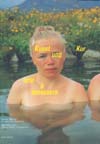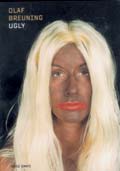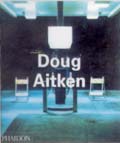|
|
|
Kunst und Kur - Arte e benessere
Kunst and Kur, an exhibition that centered on art dealing with issues of health, the body, and curative treatments, was sponsored by Merano Arte and curated by Andrea Domesle. This volume is the catalogue that was published as accompaniment and discusses modern society’s fixation with well-being and how this has been reflected in the artistic practice of the last one hundred and fifty years. The images range from the late nineteenth-century beaches of Franz Sbarbina and James Ensor to those on the Adriatic Riviera captured by Massimo Vitali; from Pierre-Auguste Renoir and Pablo Picasso’s Bather’s to Elke Krystufek’s topless women. There are the black-and-white photographs of baths and showers by Leo Bährendt, Jean-Marc Bustamante’s empty and aesthetic gyms, and even the multi-portrait of pop singer Robbie Williams in a big spa tub, taken by Paul M. Smith. The artists often interpret the health spas and other locations in an ironic and critical mode, while the baths are used as a setting that brings home the expressive force of portraiture. The catalogue also contains critical essays on art as paradise (Carl Aigner), physical and spiritual recreation in art (Andrea Domesle), the architecture of the spa(Walter Zschokke), and art of well-being (Marcello Fera). Texts in English, German, and Italian.
Kunst und Kur - Arte e benessere, Folio Editore Vienna-Bolzano, 2001, 230 pages, cm. 16.5 x 22 cm.
|

|
Ornament and Abstraction
This catalogue was produced to accompany the eponymous exhibition recently mounted by the Beyeler Fondation in Basel. Edited by Markus Brüderlin, the volume addresses the thematic development of decoration and ornamentation within the scope of twentieth-century art history. Particular attention is paid to abstract art and its pioneers, including Wassily Kandinsky and Piet Mondrian. The historical and critical exposition begins with the pictorial innovations of Otto Runge and his use of the arabesque in the early 1900s. Of particular appeal is a section that presents photographic documentation of Western artists’ appropriation of the art of other cultures. Islamic tiles, Attic vases, and Indian baskets reveal sources of decoration and ornament; connections are drawn between the art of Henri Matisse and certain Asian and Oceanic embellishments; and pre-Columbian influences are found in the work of Joseph Albers and Barnett Newman. Dieter Bogner, Markus Brüderlin, Philippe Büttner, Oleg Grabar, Samuel Herzog, Claus Pias, Annemarie Schimmel, and Hans Zitko, among others, offer in-depth critical essays. Texts in English.
Ornament and Abstraction. The Dialogue between Non-Western, Modern and Contemporary Art, Fondation Beyeler (Baselstrasse 101, Riehen/Basel, www.beyeler.com), 2001, 245 pages, 24 x 30 cm.
|

|
Olaf Breuning. Ugly
This represents the first panoramic view of the work of Swiss artist Olaf Breuning, born in Sciaffusa in 1970. Documented in a series of beautiful photographic reproductions are his videos and installations, which sustain close ties to the media of everyday genres. Breuning uses a huge number of images that reference film, TV shows, music videos, computer games, and advertising. The book’s title, Ugly, partly refers to his recent installation Ugly Yelp (2000), a fascinating hybrid created from the accoutrements of occultism, New Age fads, and vampire movies. The volume contains critical texts by Christoph Doswald, Gianni Jetzer, Markus Stegmann, Dorothea Strauss, and Philippe Vergne. Texts in English.
Olaf Breuning. Ugly, Hatje Cantz Publishers (Senefelderstrasse 12, Ostfildern-Ruit, www.hatjecantz.de), 2001, 159 pages, 22,4 x 30,5 cm.
|

|
Doug Aitken
The young California artist Doug Aitken is the subject of this monograph by Phaidon Press. His video installations—ranging from monsoon (1995), shot in the Guyanese rain forest, and diamond sea (1997), made in the Namibian desert, to electric earth (1999), which takes the Los Angeles suburbs as its landscape—are all thoroughly documented. The volume also features a critical text by Daniel Birnbaum and an interview by Amanda Sharp, a critic and publisher of “Frieze.” For the “Artist’s Choice” section, Aitken has selected an extract from “Funes the Memorious” (1941) by Argentinean writer Jorge Luis Borges. Texts in English.
Doug Aitken, Phaidon Press (Regent’s Wharf, All Saints Street, London, www.phaidon.com), 2001, 159 pages, 29 x 25 cm.
|

|
Arte Povera from the Goetz Collection
Following the original German-language edition published in 1997, this book had been recently reissued in an English version. It is a grand homage to the protagonists of Arte Povera and their works in the Goetz Collection in Zurich, housed in the expositive structure created by architects Jacques Herzog and Pierre de Meuron. In addition to an array of interesting texts authored by critical historians, including Rainald Schumacher, Carolyn Christov-Bakargiev, Bettina Ruhrberg, Eva Meyer-Hermann, Peter Friese, Johannes Meinhardt, Marlis Grüterich, Friedemann Malschm, Nike Bätzner, and Cristiane Meyer-Stoll, the volume presents an important selection of interviews with various masters of Arte Povera, such as Mario Merz, Alighiero Boetti, Giulio Paolini, and Pino Pascali, which stand as true historic testimonies of the movement. Texts in English and German.
Arte Povera from the Goetz Collection, Sammlung Goetz (Oberföhringerstrasse 103, Munich, www.sammlung-goetz.de), 2001, 272 pages, 17 x 25 cm.
|

|
|
|
|